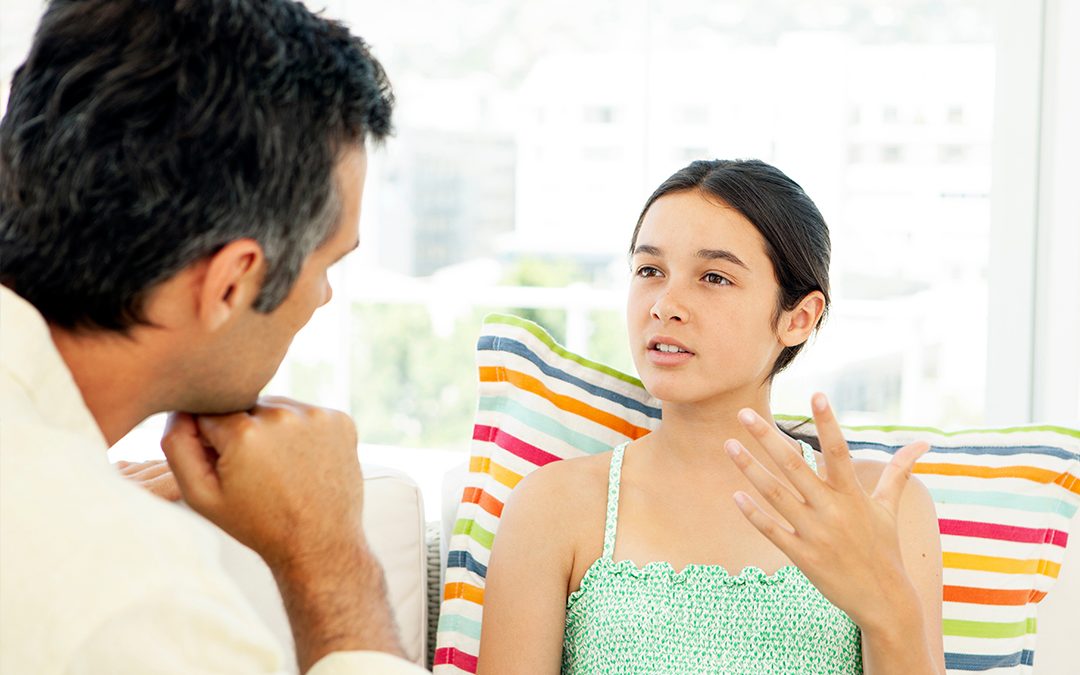As a parent seeing your child in pain feels like a Mike Tyson gut punch. So you spring into action and do everything you can to make them feel better.
Seeing your love’s bright eyes and big smiles extinguished by the weight of depression is 10Xs the pain of a gut punch because you’re at a loss for what to do.
A sprained ankle? You’ve got that; ice, elevate, crutches. Done. But, depression is not as straightforward. You can’t even see it. Sometimes it’s hard to even identify, let alone know how to fix it.
All is not lost, though; there are things you can do to help your kiddo cope.
1. Routine. Routine.
Routines create structure, safety, and security. The rub is that depressed kids will reject schedules and routines. So be ready for the snarky ‘tude and the epic eye rolls. Routines are depression’s kryptonite, so it’s worth it.
By routine, I mean doing specific things, at a specific time, for a specific duration. Try scheduling bedtime, outside playtime, schoolwork, and screen time. Be careful, you’ll need to sprinkle in some flexibility on occasion. You want routine, not rigidity.
2. Get some wellness their your world
Science says the more folks engage in wellness activities, the less likely they are to be depressed. eating a healthy diet, exercising, and making healthy connections with others.
Do one or all of these to drizzle wellness in your child’s world:
- Hang out in nature: Science says 120 minutes in nature per week promotes positive mental health, like reducing depression.
- Exercise: Exercise releases a feel-good chemical in your brain that naturally improves mood and alleviates depression.
- Eat more healthy and less processed foods: This one is tough! Getting kids to eat healthily is a never-ending battle. But if you do just one of these 50% of the time, it’ll make a big difference.
- Replace 2 servings of soft drinks or juice with water.
- Replace one favorite junk food with dried fruit. Maybe it’s me, but I swear — Trader Joe’s dried mango tastes just like candy.
- Serve more foods like salmon, blueberries and broccoli, they are thought to have nutrients known to help with depression
Give and Get Info
There is so much misinformation about depression. Raise your hand if you’ve heard things like, you can just snap out of it, and talking about it makes it worse. Or kids don’t have anything to be depressed about. These beliefs cause shame and will definitely interfere with your kiddo getting better.
What you need are the facts, like:
- Depression is caused by an imbalance of brain chemicals.
- Movement and medicine can help get those chemicals back in balance.
Here are a few ways to arm yourself with facts:
- Talk to a professional
- Read books and blogs like the one I recommended below
- Follow mental health professionals on social media
- Listen to mental health podcasts
Take care of yourself
It’s cliché, but I’ll write it anyway. You can’t pour from an empty cup. You are no good to anyone, especially your child if your cup is bone dry.
My recommendation? Have a personal happy hour at least twice a week. Take anywhere from 20 to 60 minutes alone. Turn off all devices so you can slow your mind and reset your nervous system.
My go-to personal happy hour situation looks like this… in my car, with lavender essential oil, a snack, music on, windows down, and seat reclined. After a crazy day, it feels like heaven.
Don’t go it alone
Cliché number 2 in 3…2…1… It takes a village to do most things, especially raising a child.
Sometimes the village is family and friends, and sometimes it’s professionals.
If there are people in your circle who’ve experienced depression or are great listeners, use them as a resource. If your kiddo needs more support, definitely reach out to a mental health therapist. Someone who specializes in working with children and will help you understand and support your kiddo through this illness. I’ve found that play therapists that work with teens are really impactful.
Create a Safety Plan
Sometimes the pain of depression is so unbearable that people choose suicide to make it stop. In other cases, teens will feel numb and engage in self-harm in order to ‘feel something.’
If you suspect your child may engage in one of the above. Get together and create a plan with specific steps your teen should take if they are thinking about harming themselves. Once the plan has been written, be sure both of you save a picture of it in your camera roll. Use the document below as a guide.
Resources
Get some wellness in your world:
- Guided meditation for teens: Smiling Mind – https://www.smilingmind.com.au/
- Guided meditation for people of color, all ages: Liberate – https://liberatemeditation.com/
- The Calm app has a variety of guided meditations for depression, adults and teens.: https://www.calm.com/?gclid=EAIaIQobChMI37Lcu6Kl6wIVrD6tBh3Maw1AEAAYASAAEgIoJfD_BwE
Don’t go it alone. To find a therapist try:
- Play therapists: https://www.a4pt.org/
- Theravive : https://www.theravive.com/
- Therapy for Black Girls: https://therapyforblackgirls.com/
- Ayana Therapy: https://www.ayanatherapy.com/
Get and give info:
- “Lonely, Sad and Angry: How to Help Your Unhappy Child,” by Barbara D. Ingersoll
- “Help Me, I’m Sad: Recognizing, Treating and Preventing Childhood Depression and Adolescent Depression,” by David G. Fassler and Lynne S Dumas
Create a safety plan:
- Here is a sample of a safety plan you can complete with your teen. https://suicidepreventionlifeline.org/wp-content/uploads/2016/08/Brown_StanleySafetyPlanTemplate.pdf
Yeshiva Davis – LMFT, MBA
President & Founder K&S Therapeutic Service, Inc.
IG: @kandstherapy
FB: @kandtherapy
Twitter: @kandstherapy
(310) 929-5519

